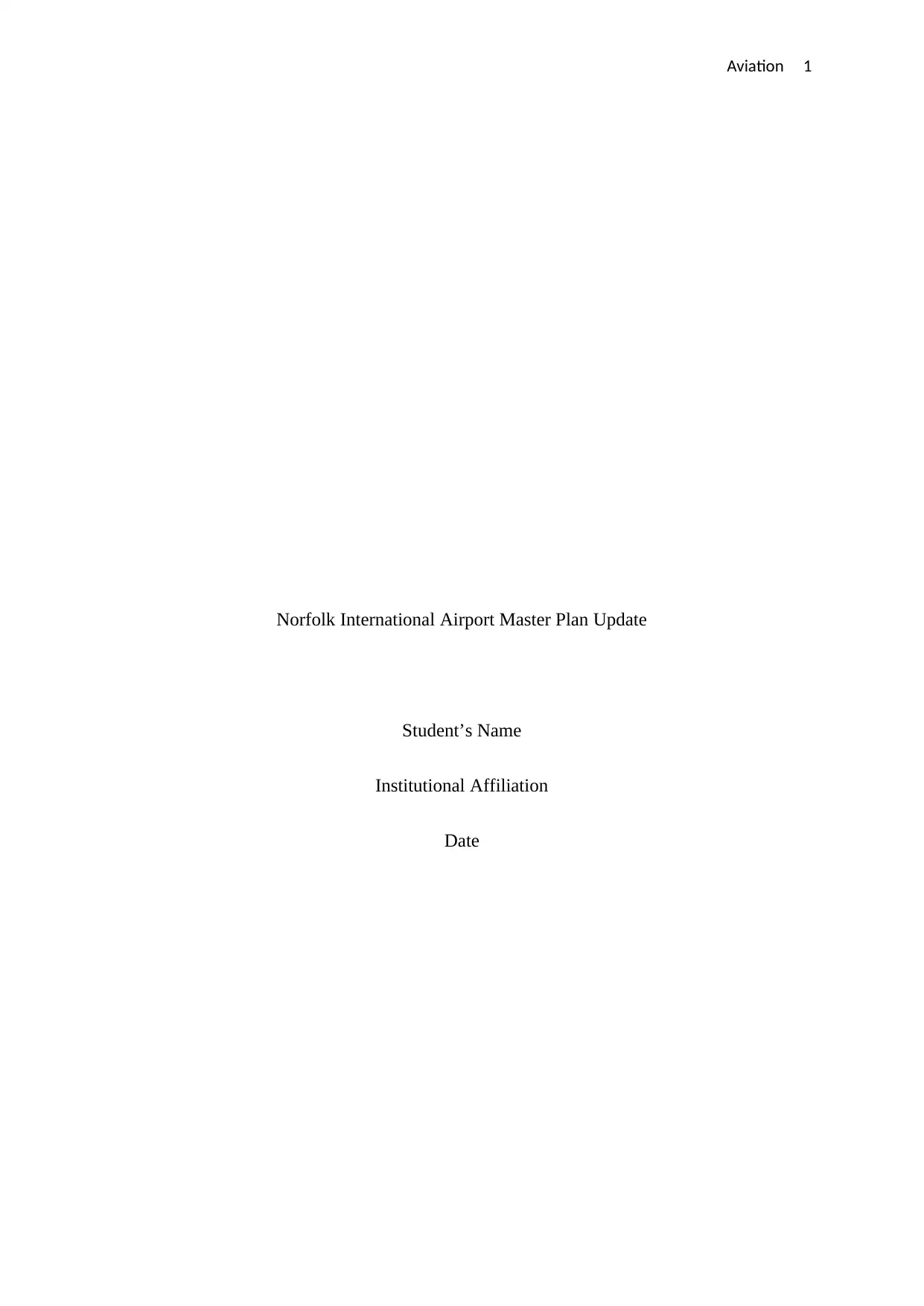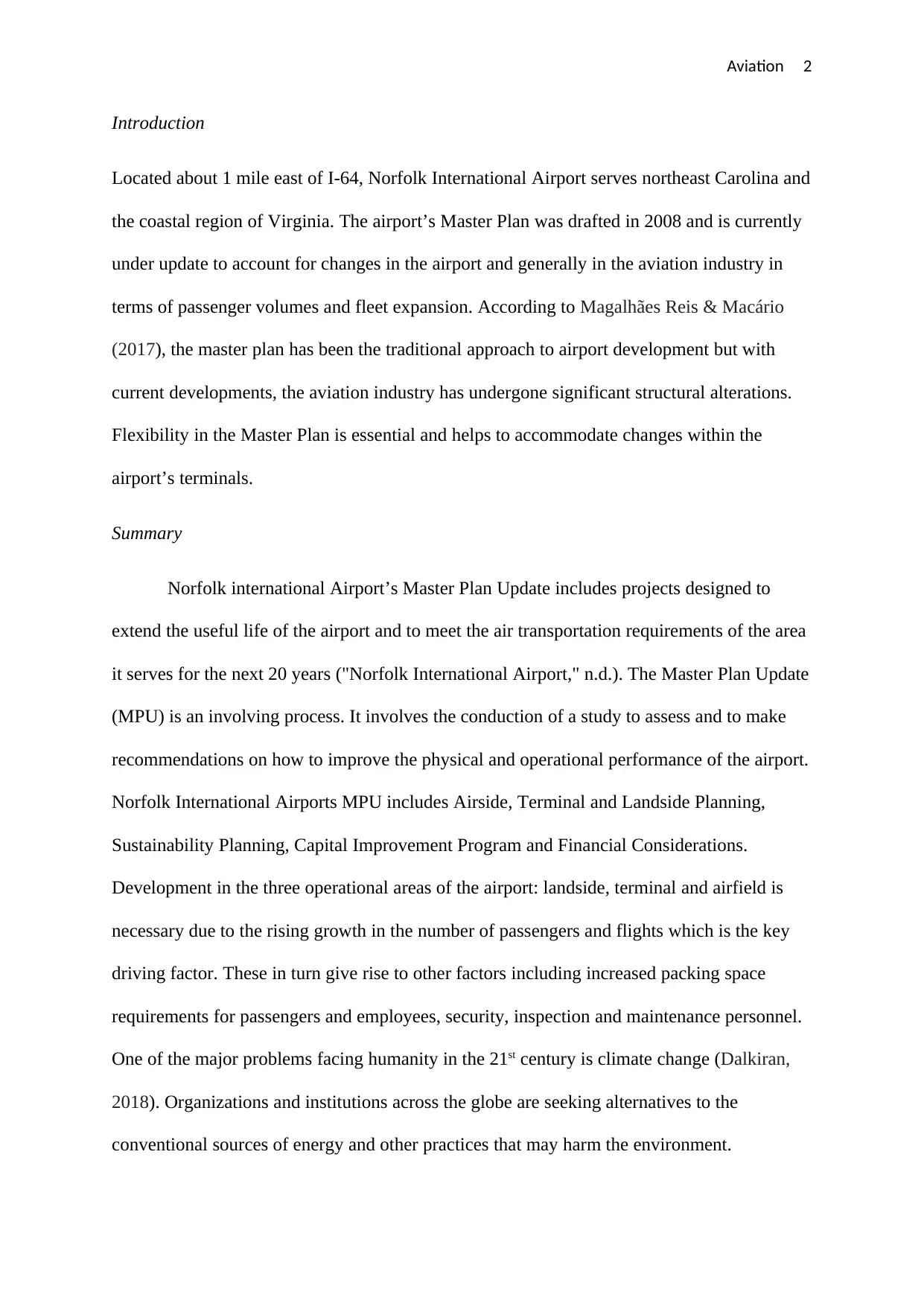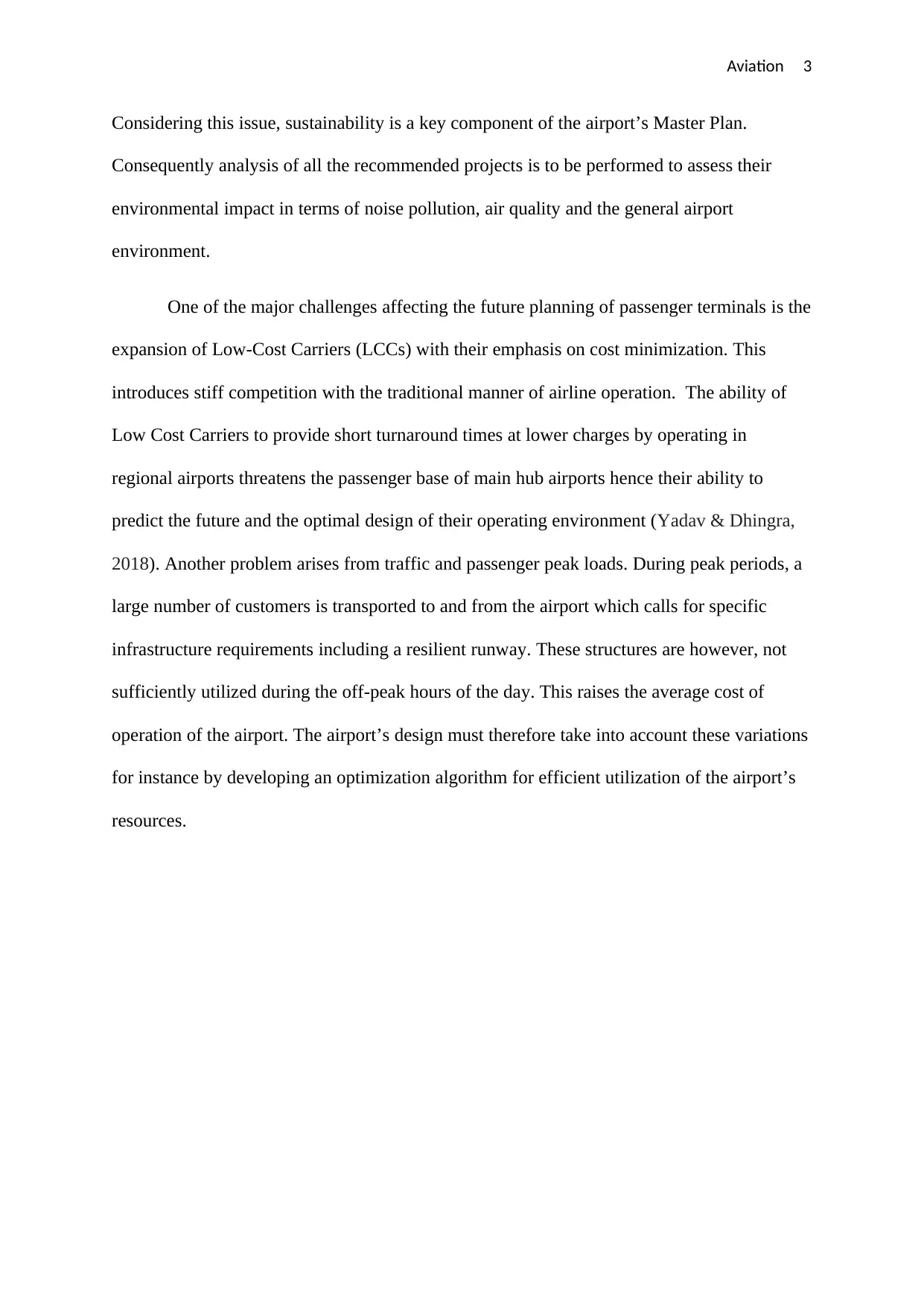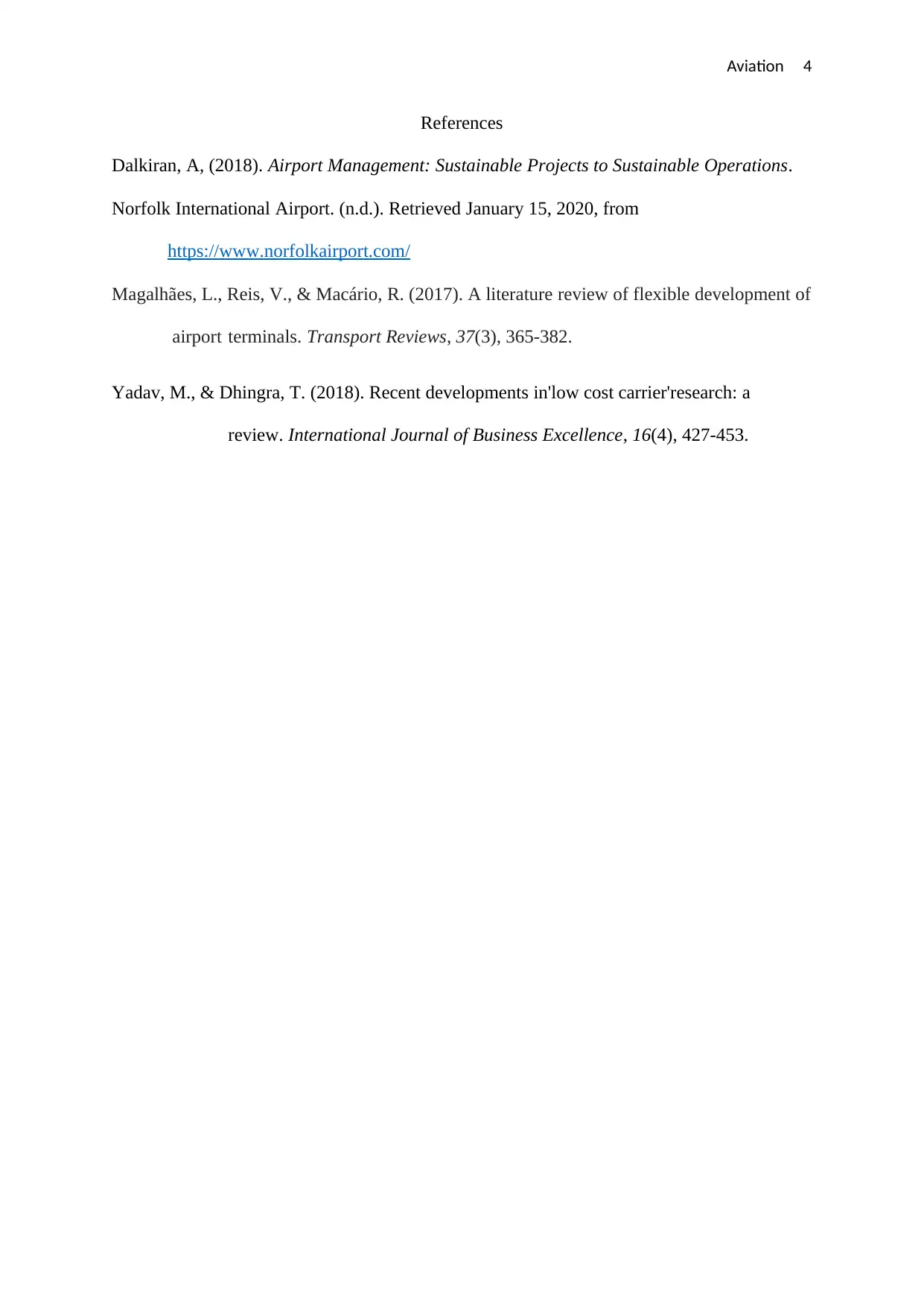Aviation Report: Norfolk International Airport Master Plan Update
VerifiedAdded on 2022/08/25
|4
|676
|23
Report
AI Summary
The report focuses on the Norfolk International Airport Master Plan Update, examining key aspects such as airside, terminal, and landside planning, as well as sustainability considerations. It addresses the challenges posed by Low-Cost Carriers (LCCs), peak traffic loads, and the need for efficient resource utilization. The report also highlights the importance of environmental impact assessments, including noise pollution and air quality. The Master Plan aims to extend the airport's life, meet future air transportation needs, and ensure sustainable operations. The analysis includes discussions on the impact of LCCs, the need for resilient infrastructure, and the development of optimization algorithms to improve efficiency. The report references the need for environmental considerations in all projects and mentions the importance of addressing climate change concerns.
1 out of 4











![[object Object]](/_next/static/media/star-bottom.7253800d.svg)